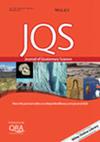Sub-centennial upper water column structure variability of the tropical Indian Ocean since the Last Glacial Maximum
Abstract
The upper water column (UWC) is involved in the worldwide distribution of heat and nutrients. However, global warming is expected to alter the UWC structure due to temperature- and precipitation-induced stratification. This impact of global warming is comparatively more pronounced in the Indian Ocean. Therefore, to understand the fate of the UWC structure in the future, it is important to comprehend its past variability in the Indian Ocean. To achieve this, we have reconstructed sub-centennial scale variations in the UWC structure of the tropical central Indian Ocean by using the isotopic composition (δ18O and δ13C) of surface-dwelling planktic foraminifera Globigerinoides ruber and subsurface-dwelling Neogloboquadrina dutertrei. The difference in the isotopic composition of the surface- and subsurface-dwelling species (Δδ18Or-d and Δδ13Cr-d) was used to understand the UWC structure variability in the tropical central Indian Ocean. We report a deeper mixed layer and thermocline during the last glacial period, followed by a shoaling of the thermocline during the glacial–interglacial transition. The thermocline also deepened during intense boreal summer monsoon events such as in the Bølling–Allerød and early Holocene. Our findings suggest that the tropical Indian Ocean UWC is influenced primarily by the intensity of the monsoon winds. From the comparison of our record with those of the eastern and western Indian Ocean, it is evident that a similar climatic forcing governed the central and eastern regions during the last glacial–interglacial period.

 求助内容:
求助内容: 应助结果提醒方式:
应助结果提醒方式:


